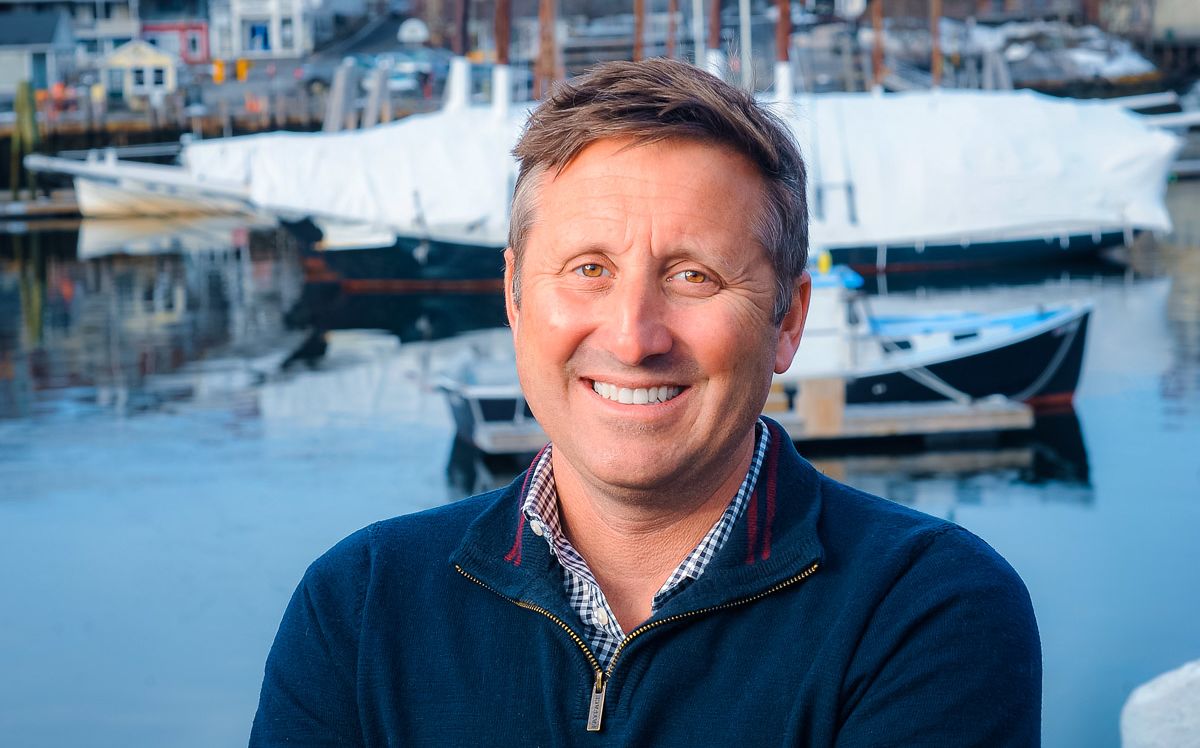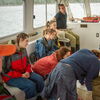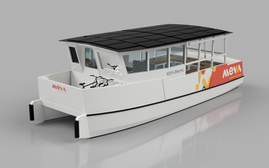
Business Leaders: Drew Lyman covers the waterfront as boatbuilder, developer
 PHOTo / Fred Field
Drew Lyman, president of Lyman-Morse Boatbuilding Inc., led the development of a 44,000-square-foot site, with restaurants, retail, office space and a marina, on Camden’s harbor.
PHOTo / Fred Field
Drew Lyman, president of Lyman-Morse Boatbuilding Inc., led the development of a 44,000-square-foot site, with restaurants, retail, office space and a marina, on Camden’s harbor.
Drew Lyman is the top leader at Lyman-Morse Boatbuilders Inc., a Thomaston company that had its roots as the Morse Boatyard and was formally started in 1978 by Lyman’s father, Cabot Lyman.
In addition to being a significant employer in Thomaston, where the company builds yachts, Lyman led the $15 million redevelopment of the Camden waterfront, expanding the original Wayfayer boatyard to include 44,000 square feet of retail and restaurant space, office space and yacht services. Lyman also had a key role in the renovation of the historic American Boathouse at the head of Camden Harbor. On the boat building side, the Lyman-Morse 46 yacht won the 2023 “Boat of the Year” award from Cruising World magazine. It has also pushed innovation: working with a California company, Lyman-Morse has developed the Navier 27 underway, an electric, semi-autonomous foiling vessel.
Mainebiz: In Camden, you started with a boatyard and expanded into retail and mixed-use. How did the shift in thinking come about?
Drew Lyman: We bought it eight years ago. It’s been one of the best acquisitions for us. [Originally] it was a very old, very run-down building. Quaint for Maine. But our brand is a bit higher end. The restaurant had a fire, with a lot of smoke damage. We saved the big boat shed, but then gutted it and outfitted it. Now it is a modern boatyard. If you go to [the Safe Harbor] Newport Shipyard in Newport, R.I., they have offices and different spaces. I kind of borrowed that model a bit. This is a Maine version. Camden has that same beauty and accessibility. The value was there. We have workspace for the crew and a rigging shop. On the front side, it’s mixed use, with two restaurants, retail and some residential on top. There’s also office space. The idea was to bring energy, vibrancy to the boatyard itself. It fills those docks. [Customers] like having a restaurant right off your dock. I’m a big believer in making it a place they’ll tell everyone about. This is what customers want [from a marina]. You don’t want to be too industrial anymore.
MB: How did the American Boathouse project come about?
DL: We worked through the general contractor, Cold Mountain Builders of Belfast. I knew the [boathouse] owners. They knew we’d done high tech architectural work. We did the mahogany doors in front. We did PLC-actuated doors [a programmable logic control system], with a remote-control door system. We built the ramp system.
MB: On the yacht-building side, the Lyman-Morse 46 yacht won Cruising World’s 2023 ‘Boat of the Year’ award for domestic boats.
DL: It looks like a wooden boat, but it’s very high tech, with titanium fixtures, a carbon stringer and cold-molded hull. It was designed by Kevin Dibbly out of New Zealand and my father had a lot of ideas on the boat. It’s designed to be a fast boat, but also a comfortable cruising boat. It’s not a lightweight boat, but it’s an easy boat to sail. It’s easy to use and not overloaded with accessories. We kept it simple.
MB: Has the profile of the average boat buyer changed?
DL: There are really a lot of profiles. The LM 46 is the answer to some terrible production boats. We wanted something with a soul. The demographics around this boat are essentially younger — it attracts a younger age group. It’s not a fully custom boat.
MB: Tell us about the Navier 27 — an electric powered, semi-autonomous foiling vessel. Is the electric boat here to stay?
DL: It’s definitely here to stay at some levels. Not on all levels. When you’re talking about day cruising, it’s perfect. When you’re talking about going offshore and you have to deal with charging — that becomes challenging. That might be more of a hybrid. [Electric boat use] is all intercoastal. It’s perfect. In some ways it’s going to be easier and easier. It’s pretty incredible.
Navier is the company. It was designed by Paul Bieker, a Seattle boat designer. Lyman-Morse is the builder. They liked our expertise. We’re not a full production boatyard. We’ll do the first three or four, then let a production company — someone with the capability to build 150 boats a year — take it from there. With the Navier 27, we’ve built two hulls, test boats. The boats premiered at Art Basel Miami. Navier views itself as a tech company — they’re MIT grads. They approached us because we have a big composite shop.
MB: How do you coordinate the various arms of Lyman-Morse?
DL: My whole plan here has been to spin off a lot of the stuff, and have each be a profit center. It’s challenging to make sure people are in the right places. It’s a dynamic mix here — there are a lot of really smart people here. With recruitment and hiring, I’ve never seen the amount of time we’re putting into it. We’re recruiting out of the Landing School [in Arundel] and IYRS [School of Technology & Trades, in Newport, R.I.]. We just hired five people. It’s a challenge losing people when they retire. The longer they’re in the boatyard the more they know. You’re only as good as your team — and the place runs great when I’m not around!

Mainebiz web partners
BR













1 Comments